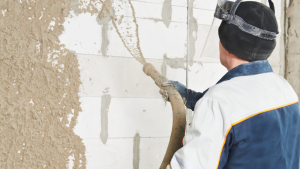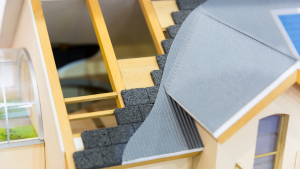Patching stucco is one of the most common issues that homeowners confront. It’s a difficult and time-consuming process.
I go through the fundamentals of stucco repair in the following post.
Step 1: Determine if your stucco needs to be patched.
Stucco is composed of two cement layers and a thin coating of sand. This mixture is then combined with water to produce a paste. It dries in the form of the mold to which it is applied.
If your stucco starts flaking off, you’ll need to scrape it off and install a fresh coat of stucco.
You may repair any peeling stucco without removing the original stucco.
It’s usually a good idea to see a professional if you need clarification on mending your stucco.
Step 2: Remove the old stucco.
Patching stucco often entails removing the old stucco and adding a fresh coat of stucco.
This is the most challenging aspect of the procedure since it entails removing the current stucco and putting on a fresh coat. This necessitates the use of a variety of cutting instruments as well as safety measures.
Step 3: Replace the stucco.
After removing the old stucco, installing the fresh layer is time.
Stucco may be applied using a trowel in most circumstances. It should be noted. However, that stucco is a tough material, and scoops are only some of the most effective equipment.
In other circumstances, a stiff-bristled brush will suffice.
Trowel the stucco in the pattern of the original stucco if you have one. Use caution while using a trowel on a damp surface.
Step 4: Reapply stucco around the door.
Ensuring that the patching operation does not harm the door is critical.
Applying the new stucco around the door and walls while leaving a little space around the door open is an excellent technique.
After the fresh stucco has dried, fix the little area around the door.
Step 6: Apply the sealant again.
After you’ve cleaned off the dust and dirt, reapply the sealant.
Most sealants need to be reapplied after a few weeks or months.
Step 7: Apply the paint again.
It is crucial to watch out for paint peeling off the walls when painting the area.
To prevent paint from peeling off the walls, apply a small quantity of paint sealer.
You may also coat the wall with a small amount of paint. However, this is only possible if the wall is entirely dry.
Step 8: Apply the caulking again.
If the roof leaks, ensuring it is not harmed is critical.
Water intrusion into the walls and ceilings may be prevented by caulking the roof.
Using a caulking gun, caulking may be easily applied in a variety of colors.
9th step: cleanup
You can clean up once you’ve applied the caulking.
Use a broad brush to sweep away all of the dirt and dust. Then remove any lingering dust with a damp cloth.
A vacuum cleaner may also be used to remove loose dust and dirt.




